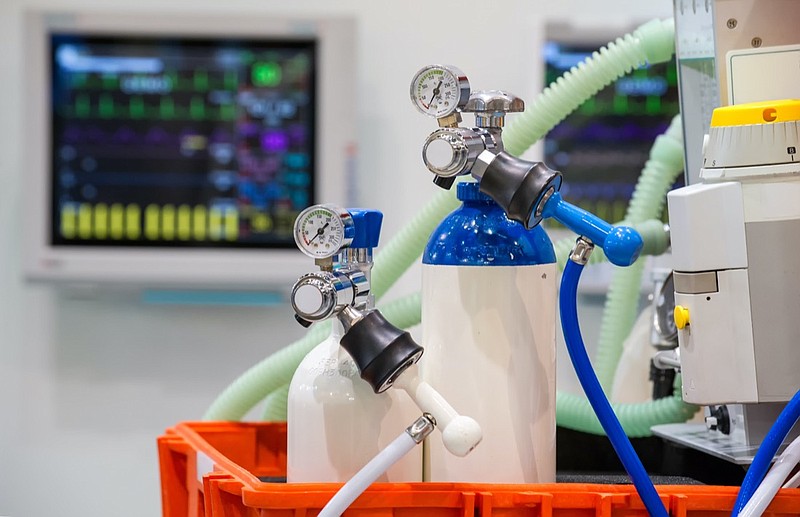The earth is a commodious place for human life in part due to the abundance of oxygen. Half of the earth's composition by mass is made up of oxygen, by far the most abundant element in our little neighborhood of the solar system (extra credit if you know number 2: silicon). So how is it that something so essential and ubiquitous can be in mortally short supply amidst the latest Covid-19 surge?
Many places in the developing world are suffering devastating second and third waves of the virus as their vaccination rates remain low. With the dramatic surge in hospitalizations, supplies of live-saving medical grade oxygen have run low or are depleted entirely due to an unprecedented spike in demand and a lag in the ability of supply chains to increase production. And while many agencies and corporations are racing to respond, the situation remains dire especially in poorer and more remote areas of the world.
Oxygen is literally all around us, including in the water we drink and the air we breathe. Our atmosphere contains 21 percent oxygen along with 78 percent nitrogen and traces of other elements. It is from this ambient supply that concentrated oxygen is extracted through different commercial processes. The vast majority of this production is used in industrial applications like steel making, rocket propulsion, chemical water treatment and myriad others. The human body also depends critically on oxygen for proper cellular activity, hence the need for supplemental oxygen in patients with compromised respiratory function. When the body's saturation level falls too low, cells begin to die and organ failure may result. Acute Covid patients especially depend urgently upon supplemental supply.
But not all oxygen is alike. The processes for producing and distributing the gas vary in sanitation and purity. The 1 percent or so of oxygen produced for human consumption must adhere to exacting standards of purity in manufacture and transportation that industrial consumption does not demand. Small impurities or contaminants that are not significant in a rocket engine can prove fatal in human patients. It is the supply chain for this high-quality, medically certified medical oxygen that is severely strained given the surge in demand.
The most acute shortage is in India. With 1.4 billion people, India has seen 25 million cases of Covid-19 and is suffering 4,000 deaths per day. Hospitals are jammed, and the demand for oxygen has increased sevenfold in just the past month. But India is not alone; Brazil, Peru, Pakistan and a dozen other developing countries are suffering critical shortages, and Africa appears to be on the cusp of an impending crisis as well.
The demand spike is exacerbated by a distribution problem as well. Hospitals in wealthier countries receive liquid bulk oxygen deliveries by tanker truck, then gasify and deliver it to patients via internal piping systems. Smaller and poorer facilities must secure the gas in pressurized cylinders containing far less of the product and costing up to 10 times more. Delivering medical grade gas is more difficult with cylinders as individual tanks must be thoroughly purged and sanitized between uses and are bulky and costly to transport. A recent surge in a particular fungal infection in India has also been linked to suspected reuse of improperly cleaned oxygen equipment. Individual portable oxygen concentrators can help, but again the cost and lack of wide availability limits their utility as a meaningful stopgap.
The enormous challenge cannot be met overnight, but stakeholders are mobilizing to address the need. One example, the "Every Breath Counts Foundation," is a coalition of governmental and global health agencies, non-profits, pharmaceutical manufacturers, insurance companies and oxygen producers originally formed to reduce worldwide deaths from pneumonia. The Foundation has now trained its considerable firepower on the oxygen shortage. Unicef, the World Bank, the World Health Organization and numerous other relief agencies have funded emergency shipments, and several NGOs are sponsoring entrepreneurial startups in the affected countries to increase indigenous supplies.
As with so much of the world's response to the Covid-19 outbreak, the initial response to the need for critical supplies including oxygen was hampered by a lack of preparedness. We can hope this will prove to be a lesson learned.
Christopher A. Hopkins is a certified financial analyst.
